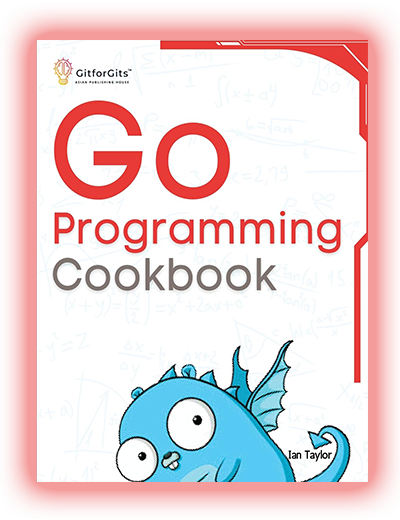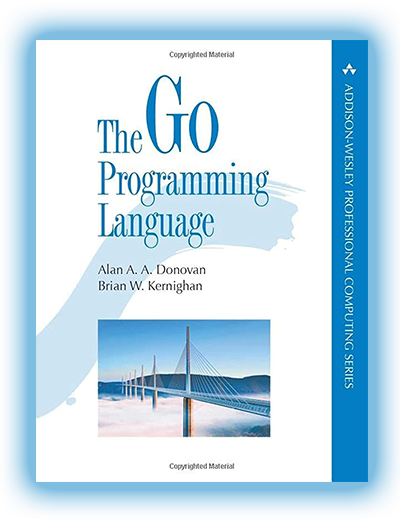I’m Emily Carter, a Backend Developer specializing in Golang since 2016. I hold a B.Sc. in Software Engineering from the University of Washington, where I focused on distributed systems and concurrent programming. Since then, Go has been my primary language for building cloud-native applications, microservices, and backend APIs at scale.
Go isn’t just another backend language - it’s a mindset shift. Its simplicity, strict conventions, and built-in concurrency model make it ideal for building fast, maintainable systems. I review books on Golang because the quality of learning materials is crucial in helping developers grasp these paradigms. My focus is on books that go beyond syntax and teach developers how to write idiomatic, performant Go code for real-world use cases.
Designing Systems with Long-Term Thinking
As a backend engineer, I believe in minimalism, clarity, and performance. Go reinforces those values through its language design and community conventions. I prioritize pragmatic engineering and long-term maintainability.
- Simplicity scales better than cleverness
- Concurrency should be built-in, not bolted-on
- Clear code is more valuable than “smart” code
- Every tool in the stack must serve the product
- Logging, monitoring, and metrics are not optional
- Readability and testing go hand-in-hand
- Avoid abstractions that hide critical behavior
Real-World Go Projects That Run at Scale
I’ve worked on high-concurrency services, container orchestration layers, and scalable APIs. I’m passionate about building reliable systems that are easy to reason about and evolve. Go has been central to my work in both startup and enterprise environments.
Highlighted Projects:
OrderMesh – Distributed Order Processing Service
Built a Go-based system for processing thousands of concurrent orders per second.
Used goroutines, worker pools, and Kafka streams. Introduced context propagation for traceability and graceful shutdown.
AuthEdge – Authentication & Authorization Layer
Designed a pluggable authentication system using Go and OAuth2. Supported
JWT-based tokens, integrated with LDAP, and built middleware for access control in a microservices environment.
MetricFlow – Monitoring and Alerting Pipeline
Developed a Go service that collected, filtered, and pushed system metrics to
Prometheus and Grafana. Used buffered channels, backpressure handling, and custom exporters for infrastructure telemetry.
DocuServe – Document Conversion Microservice
Created a containerized Go app that processed and converted large PDF files to multiple
formats using concurrent job execution. Implemented file streaming and retry logic for fault tolerance.
GoBoard – Real-Time Dashboard Backend
Built the backend for a real-time monitoring dashboard using Go and WebSockets. Focused on
low-latency updates, efficient memory management, and push-based event architecture.
The Go Stack I Use to Build Fast, Reliable Backend Services
As a Backend Developer specializing in Golang, I focus on creating high-performance APIs, microservices, and distributed systems. Go’s simplicity and built-in concurrency make it my first choice for backend development - especially when reliability and speed matter. I write clean, idiomatic Go code and deploy services that are easy to monitor, scale, and maintain in production environments.
Here’s an overview of the tools and technologies I use to deliver robust backend infrastructure:
| Technology | Using Since | How I Use It in Practice |
| Golang (Go) | 2018 | My primary language for building APIs, background workers, and CLI tools. I use Go for its speed, concurrency model, and strong standard library. |
| Gin / Echo | 2019 | Lightweight web frameworks I use to build RESTful services with middleware, validation, and request routing. I prefer Gin for its performance and simplicity. |
| gRPC | 2022 | Used for fast, contract-first communication between internal services. I generate stubs with protoc and apply strict schema enforcement in microservices. |
| PostgreSQL / Redis | 2017 | I design relational schemas for PostgreSQL and use Redis for caching, rate-limiting, and pub/sub messaging in scalable services. |
| Docker & Docker Compose | 2020 | I containerize Go apps with minimal images and orchestrate services locally and in CI using Docker Compose. I also use multi-stage builds for optimization. |
| Prometheus + Grafana | 2021 | I integrate metrics collection and alerting into Go services using promhttp, exposing internal stats and visualizing them in Grafana dashboards. |
| Go Modules & Linting | 2021 | I manage dependencies with go mod and enforce code quality using golangci-lint, vet, and staticcheck as part of my CI/CD pipeline. |
| Testify + Go Test | 2019 | I write unit and integration tests using Go’s built-in testing tools and the Testify suite for assertions, mocking, and test structure. |
Go with Go: Beginner-Friendly Tips from a Backend Engineer
- Read "Mastering Go" by Mihalis Tsoukalos
- Practice by building simple CLI tools and HTTP servers
- Learn Golang's concurrency model early - it’s not optional
- Study idiomatic Go by reading open source code
- Don’t skip Go testing - start with testing and Testify
- Understand context usage and error handling patterns
Your Questions, My Experience: Answered
Q1: What’s the best way to learn idiomatic Go?
Read lots of Go code - not just tutorials. The Go standard library is incredibly well-written and full of real-world examples of idiomatic patterns. Books like Effective Go and Go Proverbs help you understand the design philosophy. Also, embrace the Go tooling (go fmt, go vet, golint) early - they reinforce good habits.
Q2: What makes Go unique compared to other backend languages?
Go strikes a rare balance: it’s minimal yet powerful. It compiles fast, runs efficiently, and has first-class support for concurrency. Unlike languages with massive ecosystems and heavy abstractions, Go is focused. It forces you to think about design and state explicitly, which is a good thing for building reliable systems.
Q3: Do I need to understand concurrency to be a good Go developer?
Absolutely. Go’s concurrency model is one of its defining features. Understanding goroutines, channels, context cancellation, and how to avoid race conditions is essential. Even basic web services benefit from concurrency patterns, and nearly every real-world Go app uses them in some form.
Q4: How do you approach performance tuning in Go?
Start with benchmarks (go test -bench) and profiling (pprof, benchstat). Then look at memory allocations, goroutine leaks, and blocking operations. Often, bottlenecks come from misuse of channels or I/O - not raw computation. I optimize conservatively: measure first, then improve with intent.




